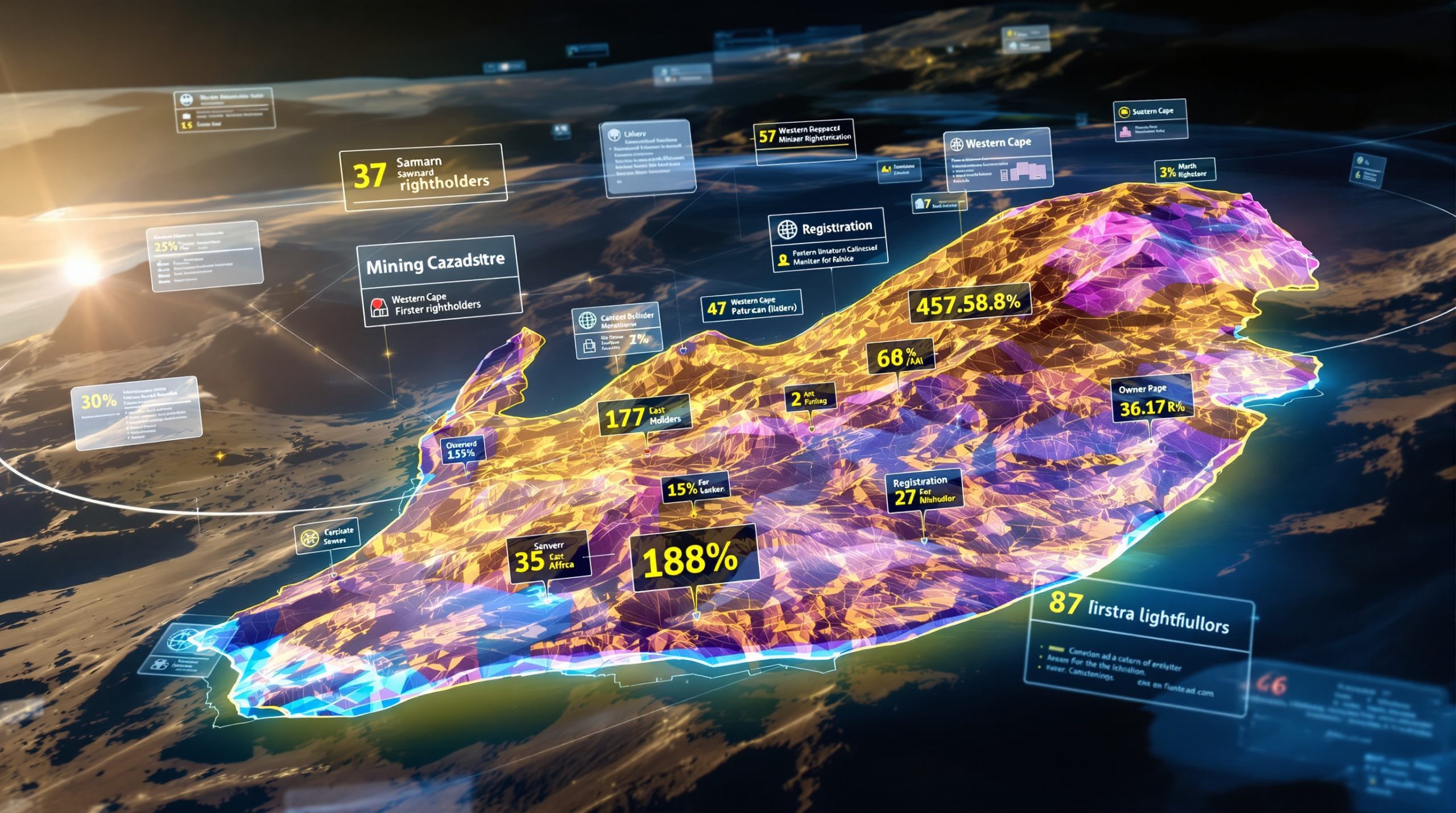Iron Ore Negotiations Between BHP and China Mineral Resources Group: A Comprehensive Analysis
The current pricing dispute between mining giant BHP Group and China Mineral Resources Group (CMRG) represents a significant shift in the global iron ore market types dynamics. This standoff, which may extend into early 2026, highlights China's growing determination to leverage its position as the world's largest iron ore consumer to gain more control over pricing mechanisms.
The Core Issues Behind the Dispute
CMRG has directed major Chinese steelmakers and traders to halt purchases of new dollar-denominated seaborne cargoes from BHP. This directive, issued in late September 2025, marks an escalation in China's approach to iron ore procurement negotiations.
The dispute centers primarily on pricing terms and contract structures rather than supply volume concerns. Unlike previous trade war impact tensions, this conflict focuses specifically on how iron ore transactions are structured and priced.
Despite the purchasing halt, BHP has experienced minimal immediate disruption to shipments, as the company had already fulfilled most allocations for November and December 2025 before the directive was issued.
The true impact may not become evident until January 2026 delivery negotiations begin, providing both parties with a window for potential resolution before more severe market disruptions occur.
CMRG's Strategic Position
CMRG, established in 2022, represents China's centralized effort to consolidate buying power and enhance bargaining leverage with major iron ore suppliers like BHP, Rio Tinto, and Vale. The organization embodies China's long-term strategy to reshape its resource procurement approach.
While CMRG lacks formal control over individual mills or traders, its political influence gives significant weight to its directives. The organization operates through persuasion and alignment with national objectives rather than direct operational control.
The current standoff represents CMRG's most assertive negotiating position since its formation, signaling a potential turning point in the China-Australia iron ore relationship that has historically favored suppliers.
How Important Is the China-BHP Trading Relationship?
The iron ore negotiations between BHP and China Mineral Resources Group represents one of the most significant commodity relationships in the global economy, with far-reaching implications for both parties.
China's Iron Ore Dependency
China remains the world's largest iron ore consumer, with its steel industry heavily dependent on imports from major suppliers. This dependency creates both vulnerability and urgency in China's resource strategy.
| Aspect | Details |
|---|---|
| China's Annual Iron Ore Imports | Approximately 1.18 billion tonnes (2024) |
| Australia's Share of China's Imports | Approximately 60% (2024) |
| Major Suppliers | BHP, Rio Tinto, Vale |
| Steel Production Dependency | Critical for China's infrastructure and manufacturing sectors |
| CMRG's Strategic Objective | Established to enhance China's bargaining power |
China's steel industry, employing approximately 3 million workers directly, forms the backbone of its industrial economy and infrastructure development, making iron ore security a national priority.
BHP's Market Position
BHP stands as one of the three dominant suppliers to Chinese steelmakers, making this relationship critical to its business model. The company produced 249 million tonnes of iron ore in fiscal year 2024, with a significant portion destined for the Chinese market.
BHP has already fulfilled most iron ore allocations for November and December 2025, providing some short-term insulation from immediate impacts of CMRG's purchasing halt.
Following CMRG's directive, BHP offered approximately 50 cargoes to international traders and at least one Chinese company, demonstrating the company's ability to redirect shipments in the short term.
The timing provides BHP with some negotiating flexibility as immediate impacts are limited, though prolonged restrictions could force more significant adjustments to sales strategies.
What Are the Broader Market Implications?
The standoff between these two major market players has potential ripple effects throughout the global iron ore and steel industries.
Pricing Power Dynamics
Marina Zhang, researcher at the University of Technology Sydney's Australia-China Relations Institute, explains: "China wants to assert control over pricing after years of frustration at being the world's biggest buyer, but still having little say over the price. It is also a signal to the rest of the world that China intends to play by new rules."
This power struggle reflects the evolution of commodity markets where traditionally producer-dominated pricing mechanisms are increasingly challenged by coordinated consumer action.
The dispute represents a potential inflection point in commodity market dynamics, where concentrated buyer power (monopsony) confronts oligopolistic supplier concentration.
Long-Term Contract Strategies
CMRG's formation three years ago was specifically designed to enhance China's position in securing favorable long-term contracts with major suppliers. This current dispute represents a more aggressive approach to achieving those objectives.
The iron ore price trends have evolved significantly from the annual benchmark pricing system that dominated until around 2010, moving toward more market-responsive mechanisms including spot pricing and index-linked contracts.
China's push for greater influence in price formation continues a trajectory that began over a decade ago, though the centralized approach through CMRG represents a new phase in this evolution.
How Might This Dispute Be Resolved?
Several potential pathways exist for resolving the current impasse, each with different implications for the global iron ore market.
Negotiation Timeframes
The dispute may extend into early 2026 as both sides maintain their positions, with January delivery negotiations likely serving as the first major test of the standoff's impact.
BHP's ability to redirect cargoes to alternative buyers provides some short-term flexibility, though the company ultimately depends on continued access to the Chinese market.
The timing of the dispute, coming after most November-December allocations were secured, creates a natural window for negotiations before more severe market disruptions would occur.
Potential Compromise Scenarios
Several possible resolution scenarios could emerge:
-
Price Concessions: BHP may offer adjusted pricing terms while maintaining core contract structures, potentially including more favorable reference pricing or discount structures.
-
New Contract Frameworks: Development of alternative pricing mechanisms that give China more influence, such as greater weight for Chinese domestic price indices or yuan-denominated transaction options.
-
Gradual Normalization: Resumption of purchases under existing terms while longer-term negotiations continue, possibly with face-saving concessions on both sides.
-
Market Pressure Resolution: Changes in global iron ore prices may naturally create conditions for agreement, particularly if broader market movements make the disputed terms less significant.
Both sides have strong incentives to find a workable compromise, as the relationship remains mutually beneficial despite the current tensions.
What Does This Mean for Global Iron Ore Markets?
The dispute occurs against a backdrop of evolving global iron ore demand insights that will influence its ultimate resolution.
Supply-Demand Balance
The global iron ore market continues to be shaped by:
China's economic growth trajectory and steel production needs, which despite moderating from historical peaks, still represent the dominant force in global demand.
Australia's position as the world's leading iron ore exporter, accounting for approximately 53% of global iron ore exports (880 million tonnes in 2024).
Emerging alternative suppliers, particularly in Africa (Guinea) and potentially expanded production in Brazil, though significant new capacity remains years away from meaningful market impact.
Technological changes in steelmaking that may affect iron ore demand, including the gradual shift toward electric arc furnace production using scrap rather than blast furnaces using iron ore.
Pricing Mechanism Evolution
The iron ore market has undergone significant changes in pricing mechanisms over the past decade:
Movement from annual benchmark pricing to more market-responsive mechanisms including spot transactions, short-term contracts, and index-linked pricing.
Growing influence of futures markets and financial instruments, with increasing volumes on exchanges like the Singapore Exchange (SGX) and Dalian Commodity Exchange.
Increasing transparency in pricing information, with multiple price reporting agencies and indices now providing market visibility.
China's push for greater influence in price formation, which has evolved from participating in existing mechanisms to attempting to reshape the fundamental structure of the market.
How Are Other Market Participants Responding?
The standoff between BHP and CMRG has implications for other players in the iron ore ecosystem.
Other Major Suppliers
Companies like Rio Tinto and Vale are closely monitoring the situation as it may set precedents for their own negotiations with CMRG.
These suppliers face similar strategic considerations as BHP, balancing short-term sales opportunities with long-term market access and relationship considerations.
The concentrated nature of iron ore supply means that coordinated supplier responses remain possible, though antitrust considerations and individual commercial interests complicate such alignment.
Chinese Steel Producers
Individual steel producers must navigate the complex balance between:
Following CMRG directives, which align with national strategic objectives but may create operational challenges.
Ensuring adequate iron ore supplies for operations, particularly for mills with specific quality requirements or limited storage capacity.
Managing cost structures in a competitive steel market where margins are often thin and raw material costs represent a substantial portion of production expenses.
Maintaining relationships with key suppliers who may be important not only for iron ore but also for technical cooperation, blending expertise, and supply chain reliability.
What Are the Geopolitical Dimensions?
The iron ore dispute exists within a broader context of economic and trade relationships between China and Australia.
Strategic Resource Considerations
Iron ore represents one of Australia's most significant exports to China, worth approximately AUD $119 billion in 2024, making the trade relationship strategically important for both nations:
Australia relies heavily on resource exports for economic growth, with iron ore accounting for approximately 15% of the country's total export revenue.
China needs reliable iron ore supplies for its industrial development and cannot rapidly substitute Australian supply without significant disruption to its steel industry.
The relationship has weathered previous diplomatic tensions, notably during 2020-2023 when China imposed restrictions on various Australian exports including wine, barley, and coal while leaving iron ore largely untouched.
Both sides have strong incentives to find workable solutions despite political differences, as economic interdependence creates mutual vulnerability that tends to moderate extreme positions.
The iron ore relationship exists within a complex web of bilateral and multilateral relationships, including security arrangements, regional partnerships, and competing economic interests.
What's Next in the BHP-CMRG Negotiations?
The coming months will be critical in determining how this standoff evolves and ultimately resolves.
Key Milestones to Watch
January 2026 delivery negotiations will serve as the first major test of the standoff's impact and provide insights into both parties' willingness to compromise.
BHP's ability to maintain alternative sales channels will influence its negotiating leverage, particularly if international traders remain willing to purchase diverted cargoes.
CMRG's enforcement of purchasing restrictions among Chinese buyers will demonstrate the organization's actual influence over the fragmented Chinese steel industry.
Price movements in global iron ore markets may create natural pressure points for resolution, particularly if significant premiums or discounts emerge for Australian material.
Statements from both parties regarding negotiation progress will offer insights into whether a solution is emerging or positions are hardening.
Potential Long-Term Outcomes
This dispute may lead to structural changes in how iron ore is traded globally:
New contract structures that give buyers more influence over pricing terms, potentially including greater use of Chinese domestic price benchmarks or yuan-denominated transactions.
Alternative pricing benchmarks or mechanisms that reduce reliance on traditional index providers and incorporate a broader range of market inputs.
Changes in supply chain management by steel producers, potentially including greater inventory buffers, diversified sourcing, and more sophisticated hedging strategies.
Greater diversification of supply sources by China, accelerating investment in alternative iron ore projects in Africa, South America, and elsewhere.
The dispute may ultimately result in a more balanced market structure where both producers and consumers share influence over pricing and terms, rather than the producer-dominated model that has historically characterized iron ore trading.
FAQs About the BHP-CMRG Iron Ore Dispute
Why is this dispute significant for global commodity markets?
This standoff represents a potential shift in the balance of power between major resource suppliers and consumers, with China attempting to leverage its position as the world's largest iron ore buyer to gain more influence over pricing mechanisms.
The outcome could establish precedents for other commodity markets where China is a dominant consumer, potentially affecting how energy resources, agricultural products, and other minerals are traded globally.
The dispute highlights the tension between market-based pricing and strategic national interests in essential commodities, a dynamic that increasingly shapes global trade relationships.
How might this affect iron ore prices globally?
The dispute could create short-term price volatility as market participants adjust to changing trade flows. Some analysts anticipate temporary discounts for non-Australian material as redirected cargoes seek buyers.
Longer-term impacts depend on whether the standoff leads to structural changes in how iron ore contracts are negotiated and priced. If China succeeds in gaining more influence over pricing mechanisms, it could potentially moderate price volatility and limit producer pricing power.
The market's highly concentrated nature, with three major suppliers and one dominant consumer, means that even minor changes in trading relationships can have significant price implications.
What options does BHP have if the dispute continues?
BHP has demonstrated its ability to redirect cargoes to international traders and other buyers in the short term. The company's strong market position and diverse customer base provide flexibility, though China remains its most important market.
The company may explore alternative pricing mechanisms, contract structures, or even currency arrangements to accommodate Chinese concerns while protecting its core commercial interests.
BHP could potentially strengthen relationships with non-Chinese steel producers in Japan, South Korea, and emerging markets to diversify its customer base, though replacing China's scale would be impossible in the near term.
Could this dispute affect other commodities traded between Australia and China?
While currently focused on iron ore, the negotiating tactics and outcomes could potentially influence how other resource commodities are traded between the countries, establishing precedents for buyer-seller relationships.
The dispute occurs within a complex bilateral relationship that encompasses multiple commodities, investments, and diplomatic considerations, making spillover effects possible though not inevitable.
Historical evidence from 2020-2023 suggests that China tends to compartmentalize commodity trade disputes rather than applying blanket approaches across all resource categories.
What does CMRG hope to achieve through this strategy?
CMRG aims to secure more favorable long-term contract terms for Chinese steel producers by leveraging China's collective buying power, potentially establishing new pricing mechanisms that give China greater influence in the global iron ore market.
Beyond immediate commercial objectives, CMRG seeks to implement China's strategic vision of reshaping commodity markets to better serve its industrial development needs and reduce vulnerability to supplier pricing power.
The organization likely views this dispute as a test case for its broader mandate to enhance China's position in global resource markets, with successful outcomes potentially strengthening its role within China's economic governance system.
Further Exploration:
Readers interested in learning more about global iron ore market dynamics can also explore related educational content from Mining Technology, which offers additional perspectives on resource sector developments and market trends. Furthermore, the BHP strategic pivot provides additional context on how major miners are adapting to changing market conditions in their negotiations with key customers.
Ready to Stay Ahead of Major ASX Mining Discoveries?
Discovery Alert's proprietary Discovery IQ model delivers instant notifications on significant ASX mineral discoveries, helping you identify actionable investment opportunities before the broader market. Explore why major mineral discoveries can lead to exceptional returns by visiting our dedicated discoveries page and start your 30-day free trial today.




